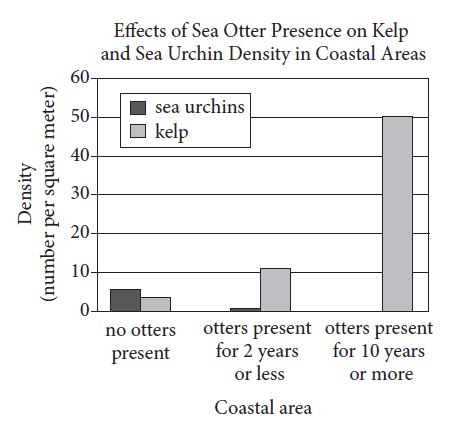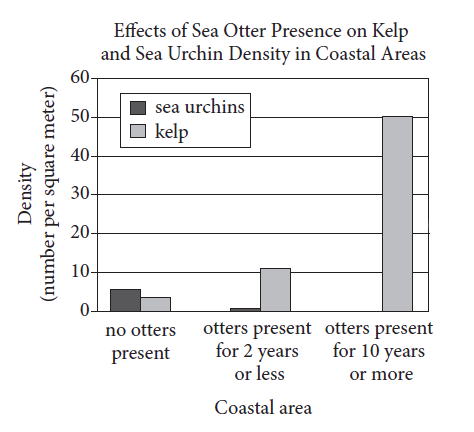What type of body plan do the following animals have : hydra, sponge, flatworms, roundworms, jellyfish, earthworm, spiders, sea horse, frog, sparrow?
To determine the type of body plan for each of the listed animals, we can categorize them based on their anatomical structures. Here’s a step-by-step breakdown:
Step 1: Identify the Body Plans
1. Cell Aggregated Body Plan: This body plan is characterized by cells that are grouped together but not organized into tissues or organs.
- Example: Sponge
2. Blind Sac Body Plan: This body plan has a single opening that serves as both the mouth and the anus. This means that food enters and waste exits through the same opening.
- Examples: Hydra, Flatworms, Jellyfish
3. Tube Within a Tube Body Plan: This body plan features two separate openings: one for the mouth and another for the anus. This allows for a more complex digestive system.
- Examples: Roundworms, Earthworms, Spiders, Seahorse, Frog, Sparrow
Step 2: Classify Each Animal
- Hydra: Blind Sac Body Plan
- Sponge: Cell Aggregated Body Plan
- Flatworms: Blind Sac Body Plan
- Roundworms: Tube Within a Tube Body Plan
- Jellyfish: Blind Sac Body Plan
- Earthworm: Tube Within a Tube Body Plan
- Spiders: Tube Within a Tube Body Plan
- Seahorse: Tube Within a Tube Body Plan
- Frog: Tube Within a Tube Body Plan
- Sparrow: Tube Within a Tube Body Plan
Summary of Body Plans for Each Animal
- Hydra: Blind Sac Body Plan
- Sponge: Cell Aggregated Body Plan
- Flatworms: Blind Sac Body Plan
- Roundworms: Tube Within a Tube Body Plan
- Jellyfish: Blind Sac Body Plan
- Earthworm: Tube Within a Tube Body Plan
- Spiders: Tube Within a Tube Body Plan
- Seahorse: Tube Within a Tube Body Plan
- Frog: Tube Within a Tube Body Plan
- Sparrow: Tube Within a Tube Body Plan
1. Cell Aggregated Body Plan: This body plan is characterized by cells that are grouped together but not organized into tissues or organs.
- Example: Sponge
- Examples: Hydra, Flatworms, Jellyfish
- Examples: Roundworms, Earthworms, Spiders, Seahorse, Frog, Sparrow
- Hydra: Blind Sac Body Plan
- Sponge: Cell Aggregated Body Plan
- Flatworms: Blind Sac Body Plan
- Roundworms: Tube Within a Tube Body Plan
- Jellyfish: Blind Sac Body Plan
- Earthworm: Tube Within a Tube Body Plan
- Spiders: Tube Within a Tube Body Plan
- Seahorse: Tube Within a Tube Body Plan
- Frog: Tube Within a Tube Body Plan
- Sparrow: Tube Within a Tube Body Plan
- Hydra: Blind Sac Body Plan
- Sponge: Cell Aggregated Body Plan
- Flatworms: Blind Sac Body Plan
- Roundworms: Tube Within a Tube Body Plan
- Jellyfish: Blind Sac Body Plan
- Earthworm: Tube Within a Tube Body Plan
- Spiders: Tube Within a Tube Body Plan
- Seahorse: Tube Within a Tube Body Plan
- Frog: Tube Within a Tube Body Plan
- Sparrow: Tube Within a Tube Body Plan
Topper's Solved these Questions
- ANIMAL KINGDOMBook:ICSEChapter:ANIMAL KINGDOMExercise:Ncert Exercises with Answers
Explore 15 Videos
- ANIMAL KINGDOMBook:ICSEChapter:ANIMAL KINGDOMExercise:Ncert Exercises (Differentiate between )
Explore 11 Videos
- ANIMAL KINGDOMBook:ICSEChapter:ANIMAL KINGDOMExercise:Test Your Progress (Short/Long Answer Type Questions )
Explore 29 Videos
- ANATOMY OF FLOWERING PLANTS - PLANT TISSUESBook:ICSEChapter:ANATOMY OF FLOWERING PLANTS - PLANT TISSUESExercise:REVIEW QUESTIONS (LONG ANSWER TYPE QUESTIONS)
Explore 20 Videos
- BIOLOGICAL CLASSIFICATIONBook:ICSEChapter:BIOLOGICAL CLASSIFICATIONExercise:Ncert Exercises (Differentiate Between )
Explore 24 Videos
Similar Questions
Knowledge Check
Environmentalist Otters
It has long been known that the sea otters (23) living along the West Coast of North America help––––––––––––––––––––––––––––––––––––––––––––––––––––––– keep kelp forests in their habitat healthy and vital. They do this by feeding on sea urchins and other herbivorous invertebrates that graze voraciously on kelp. With sea otters to keep the population of sea urchins in check, kelp forests can flourish. In fact, (24) two years or less of sea otters can completely eliminate sea urchins––––––––––––––––––––––––––––––––––––––––––––––––––––––––––––––––––––––– in a coastal area (see chart).

Adapted from David O. Duggins, “Kelp Beds and Sea Otters: An Experimental Approach.” ©1980 by the Ecological Society of America.
Without sea otters present, (25) nevertheless–––––––––––––, kelp forests run the danger of becoming barren stretches of coastal wasteland known as urchin barrens.
[1] What was less well-known, until recently at least, was how this relationship among sea otters, sea urchins, and kelp forests might help fight global warming. [2] The amount of carbon dioxide in the atmosphere has increased 40 percent (26) . [3] A recent study by two professors at the University of California, Santa Cruz, Chris Wilmers and James Estes, (27) suggests, that––––––––––––––– kelp forests protected by sea otters can absorb as much as twelve times the amount of carbon dioxide from the atmosphere as those where sea urchins are allowed to (28) devour–––––––– the kelp. [4] Like (29) their––––– terrestrial plant cousins, kelp removes carbon dioxide from the atmosphere, turning it into sugar fuel through photosynthesis, and releases oxygen back into the air.
[5] Scientists knew this but did not recognize (30) how large a role they played–––––––––––––––––––––––––––––– in helping kelp forests to significantly decrease the amount of carbon dioxide in the atmosphere. [6] Far from making no difference to the ecosystem, the presence of otters was found to increase the carbon storage of kelp forests by 4.4 to 8.7 megatons annually, offsetting the amount of carbon dioxide emitted by three million to six million passenger cars each year. (31)
Wilmers and Estes caution, however, that (32) having more otters––––––––––––––––––––– will not automatically solve the problem of higher levels of carbon dioxide in the air. But they suggest that the presence of otters provides a good model of how carbon can be sequestered, (33) or removed, from––––––––––––––––––– the atmosphere through the management of animal populations. If ecologists can better understand what kinds of impacts animals might have on the environment, Wilmers contends, “there might be opportunities for win-win conservation scenarios, whereby animal species are protected or enhanced, and carbon gets sequestered.”ANO CHANGEBsuggests—thatCsuggests, “thatDsuggests thatEnvironmentalist Otters
It has long been known that the sea otters (23) living along the West Coast of North America help––––––––––––––––––––––––––––––––––––––––––––––––––––––– keep kelp forests in their habitat healthy and vital. They do this by feeding on sea urchins and other herbivorous invertebrates that graze voraciously on kelp. With sea otters to keep the population of sea urchins in check, kelp forests can flourish. In fact, (24) two years or less of sea otters can completely eliminate sea urchins––––––––––––––––––––––––––––––––––––––––––––––––––––––––––––––––––––––– in a coastal area (see chart).

Adapted from David O. Duggins, “Kelp Beds and Sea Otters: An Experimental Approach.” ©1980 by the Ecological Society of America.
Without sea otters present, (25) nevertheless–––––––––––––, kelp forests run the danger of becoming barren stretches of coastal wasteland known as urchin barrens.
[1] What was less well-known, until recently at least, was how this relationship among sea otters, sea urchins, and kelp forests might help fight global warming. [2] The amount of carbon dioxide in the atmosphere has increased 40 percent (26) . [3] A recent study by two professors at the University of California, Santa Cruz, Chris Wilmers and James Estes, (27) suggests, that––––––––––––––– kelp forests protected by sea otters can absorb as much as twelve times the amount of carbon dioxide from the atmosphere as those where sea urchins are allowed to (28) devour–––––––– the kelp. [4] Like (29) their––––– terrestrial plant cousins, kelp removes carbon dioxide from the atmosphere, turning it into sugar fuel through photosynthesis, and releases oxygen back into the air.
[5] Scientists knew this but did not recognize (30) how large a role they played–––––––––––––––––––––––––––––– in helping kelp forests to significantly decrease the amount of carbon dioxide in the atmosphere. [6] Far from making no difference to the ecosystem, the presence of otters was found to increase the carbon storage of kelp forests by 4.4 to 8.7 megatons annually, offsetting the amount of carbon dioxide emitted by three million to six million passenger cars each year. (31)
Wilmers and Estes caution, however, that (32) having more otters––––––––––––––––––––– will not automatically solve the problem of higher levels of carbon dioxide in the air. But they suggest that the presence of otters provides a good model of how carbon can be sequestered, (33) or removed, from––––––––––––––––––– the atmosphere through the management of animal populations. If ecologists can better understand what kinds of impacts animals might have on the environment, Wilmers contends, “there might be opportunities for win-win conservation scenarios, whereby animal species are protected or enhanced, and carbon gets sequestered.”ANO CHANGEBhow large a role that it playedChow large a role sea otters playedDthat they played such a large role
How many animals in the given list have gills for respiration ?
Earthworm , Frog, Fish, Insects, Reptiles, Aquatic arthropods, Flatworm, Molluscs, Birds
View SolutionDifferentiate between the following pairs on the basis of what is indicated in the brackets.
Flatworms and Roundworms (body structure)
View SolutionGroup the following into cold blooded or warm blooded animals.
i) Sea horse (ii) horse
(iii) frog (iv) lizards
(v) birds
View SolutionWhich of the following animals have scattered cells with cell - tissues grade organization ?
(a) Sponge
(b) Hydra
(c) Liver fluke
(d) Ascaris
View SolutionWhat are the following and where do you find them in animal body?
(a) Chondriocytes (b) Axons (c) Ciliated epithelium
View SolutionWhat are the following and where do you find them in animal body
(a) Chondriocytes
(b) Axons
(c) Ciliated epithelium
View Solution
